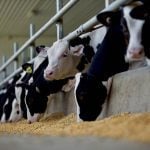While many farmers think about herbicide resistance in Australia, the U.K. and the U.S., the reality is that it’s a Canadian problem, too, says Kate Sanford Mitchell. We need to listen to extension specialists who are sounding the alarm about herbicide resistance, she adds. “Weed resistance is a global problem that requires a local solution,” […] Read more













